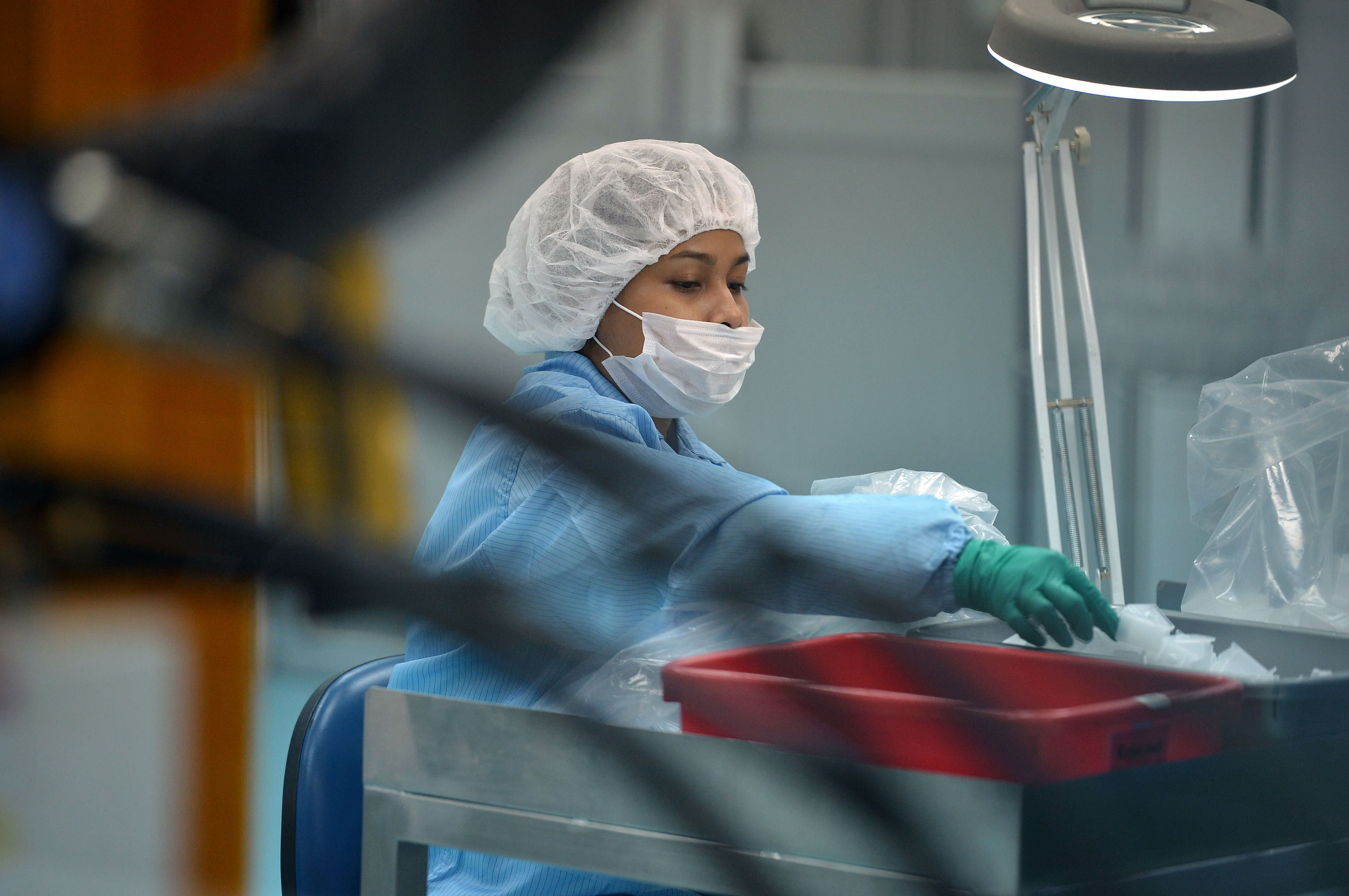When tech giant Seagate unveiled its new research and development facility in Ayer Rajah Crescent last month, the public was offered another powerful reminder of Singapore economy's ever-changing profile.
While the $100 million mobile storage research and development centre was rolled out to much fanfare, the company has been quietly cutting its manufacturing presence here for years.
The closure of its Ang Mo Kio production plant in 2009 is still fresh in people's memory, and the retrenchment of its 2,000 workers was a sign that manufacturing here may be in decline, with profound implications for Singapore's economic future.
Across the country, conscious decisions like Seagate's are being made by the private sector and, more importantly, the Government to replace the labour-reliant models with new businesses and activities that are driven more by innovation, technology and knowledge.
The objective is clear: To create a more productive economy that no longer relies on low costs and cheap foreign labour while ensuring that Singapore's aging but better trained workforce will be given meaningful jobs in high value-add sectors.

So what are the economic challenges Singapore must overcome as the country charts its future for the next 50 years? In a way, the answer to that question is already well elaborated amid an ongoing national discourse on economic restructuring and demographic constraints.
-
About The Big Quiz
-

This primer is part of The Straits Times' initiative to discuss issues of national concern.Each Monday, the paper's correspondents will address burning questions in the Opinion section, offering Singaporean perspectives on complex issues. The primers, as well as six campus talks helmed by editors and correspondents, are part of this paper's outreach programme called The Straits Times-Ministry of Education National Current Affairs Quiz, nicknamed The Big Quiz.
The nationwide event, with presenting sponsor Singapore Press Holdings Foundation, aims to promote the understanding of civics among pre-university students.
The last talk by ST journalists and quiz round will be held on July 29 at Pioneer Junior College.
So far, St Andrew's Junior College won the first quiz round, held at Catholic Junior College on April 17.
Anderson Junior College won the second quiz round on home ground on April 29,
while Anglo-Chinese Junior College took the top honours at the third quiz round on May 6 at River Valley High School.
Tampines Junior College won the fourth quiz round on home ground on May 22, while Yishun Junior College won the fifth round on home ground on May 27.
For more information, visit https://www.straitstimes.com/tags/the-big-quiz
At the highest, macro-economic level, plans have already been set in motion. Traditional manufacturing - particularly in the electronics sector that still supports one-third of Singapore's production - is beginning to give way to more knowledge-intensive production. To that end, promoting the growth of pharmaceutical and biologics manufacturing is now on the top of Economic Development Board's agenda.
Attention is also going to more service-oriented sectors, with Singapore being touted as Asia's hub for multinational companies to set up research and development labs and regional corporate headquarters. Seagate is just the latest in a long list of multinationals to make that investment decision.
The concept is to "servicise" manufacturing, which officials at the Ministry of Trade and Industry have highlighted in recent years as a key feature of Singapore's new economic reality.
But underneath the blueprints, the question on Singapore's economic future will always come back to how the country overcomes its demographic issues.
"Population challenges will come to the fore because of our low birth rate. There were 1.6 residents entering working age for every one resident exiting in 2014. By 2020, this ratio will drop to 1.1 to one. By 2030, this will decline further to 0.7 to one," DBS economist Irvin Seah told The Straits Times.
"Our population will age and will begin to shrink by 2065 if our birth rate remains at the current level of 1.2. The financial burden of the working age population will be heavy. Social expenditure will be a few times higher than what it is today. The only way to mitigate this is not only to raise productivity but to drive growth via innovation."
What the experts and government planners envision for the future will be a huge departure from Singapore's economic formula over the past 50 years, when young baby boomers came of age to boost the workforce and help Singapore grow its gross domestic product by over 40 times. "The baby boom was a one-off demographic phenomenon," wrote Mr Donald Low, associate dean at the Lee Kuan Yew School of Public Policy, in Hard Choices, published last year.
"The baby boom generation gave (Singapore) a one-off demographic dividend in the 1980s and 1990s in the form of rapid economic growth and the accumulation of large fiscal surpluses."
Beyond that one-off dividend, long-term economic growth will increasingly rely on productivity growth, for which the Government has set at 2 to 3 per cent by 2019. Between 2020 and 2030, that growth will moderate to 1 to 2 per cent, the Government forecast in the Population White Paper in 2013. So far these targets have proven to be too ambitious, with productivity actually shrinking 0.8 per cent last year.
But the window to push for a truly productivity-driven growth model will not be 50 years wide. The key changes must be in place over the next decade, Prime Minister Lee Hsien Loong stressed when he spoke at the Ho Rih Hwa Leadership in Asia Public Lecture on June 30. These include a sustained 2 per cent annual productivity growth in order to reach the upper end of Singapore's projected 2 to 4 per cent economic expansion in the long term, he said.
"If we can continue upgrading ourselves over the next decade, I think we will be in a different league. Then we have the resources, we can make the investments in our people. If we are stuck for a decade, at the end of that, we will face not just economic problems but even social problems.
"We have a difficult task cut out for us but we have no choice because (for) bigger countries, if you do not perform so well, you have the hinterlands.
"We do not have anything but ourselves. So, to go forward, we have got to improve our productivity and maintain our growth because only then can we have good jobs and new opportunities for our people."
This is a transformation that will start from the macroeconomic level and go down to individual companies and employees. At the heart of it is an increased use of technology to automate processes on one hand and investments in upgrading human capital on the other. Changes both big and small are already visible in all facets of economic activity here.
Increasingly, Singaporeans are finding themselves in food and beverage outlets that feature e-menus. Spring Singapore said it helped around 330 outlets in just the first five months this year to adopt these technologies.
Even national infrastructure is being upgraded for digitalisation. The Smart Nation programme and its quest for the Internet of Things are just starting to pick up pace, and the emergence of infocomm technologies will create a need for new investments, new skills and new jobs.
As these changes gain in critical mass, the aggregated effect on national resources, capabilities and manpower can prove a crucial capacity for the economy in the coming decades.
Mr Seah noted: "Indeed, digitalisation is revolutionising the world today.
"Global digitalisation provides ample opportunities for small economies such as Singapore. This is an area where size doesn't matter. Ideas and innovation are more important than mere financial or physical resources. Singapore must leverage the global digital trend to power the economy and to remain relevant."
The population, even as it ages, will also have to be sufficiently skilled to be another key part of this new growth formula.
That is why the Government launched the SkillsFuture initiative this year as digitalisation and technologies also transform the profile of jobs here.
"Because as your jobs change, your skills set need to change and you cannot depend on what you learned longer and longer ago in the past. Then, when the world changes, we are prepared and we are able to change with it," said Mr Lee last month.
Success is not guaranteed for Singapore to overcome these multiple layers of challenges, but the country has reasons to be optimistic, said Mr Christopher Gee, a research fellow also at the Lee Kuan Yew School of Public Policy. "The economy that Singapore needs to have in 50 years is an economy that's focused on lifelong learning... and an economy that provides opportunities through their life to make a decent living.
"The 50 years ahead will be uncharted territory for Singapore, but we should move into that uncharted territory with good confidence. There is a strong platform here, and a strong desire to understand the problems and to adapt. Our constraints should not be viewed as limitations; they can catalyse new opportunities too."

